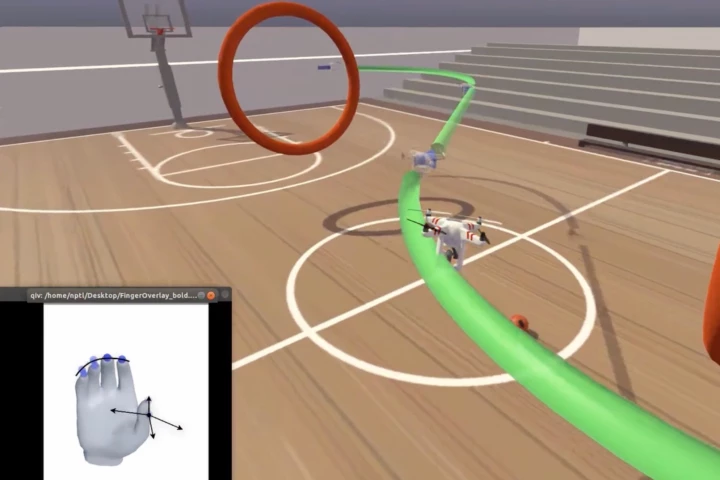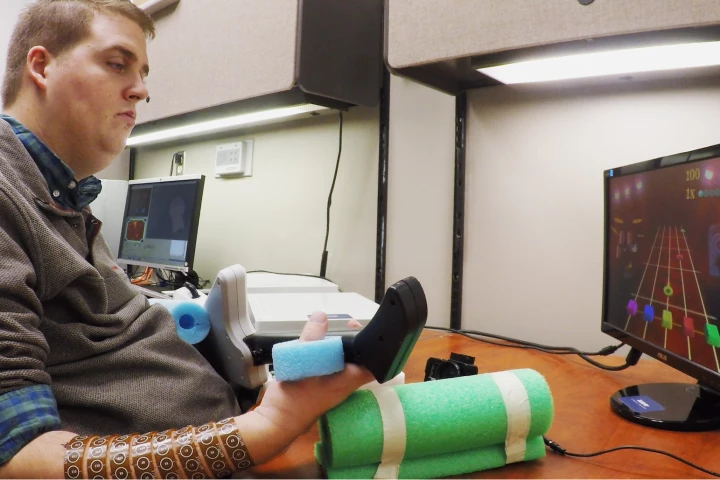Thought-control
-
Brain-computer interfaces may allow paralyzed people to perform basic tasks, but there's more to life than eating and typing. That's where a new BCI comes in, as it has allowed a man to fly a virtual drone just by thinking of moving his fingers.
-
While a number of groups are developing thought-controlled prosthetic hands, most of the devices require fiddly electrodes to be implanted in the amputee's body. Such is not the case with a new system, however, which works with implanted magnets.
-
There may be new hope for stroke victims and other "locked-in" people who are unable to communicate by conventional means. It comes in the form of the experimental new BrainGPT system, which is able to read users' thoughts and convert them into readable text.
-
Although it is possible to control devices using brain waves, doing so involves having electrodes and conductive gel applied to one's head. Now, however, scientists have developed a new type of "dry" electrode – and it's been used to control a robot.
-
Researchers have created cutting-edge graphene sensors to produce an interface that allows for accurate robotic control using thought alone. The development has positive implications for healthcare and a range of other industries.
-
When it comes to accurately reading the brain's electrical signals, many systems utilize implantable electrodes. A new technology is reportedly less invasive yet just as accurate, as it swaps regular electrodes for ultra-thin wires.
-
Various groups have already developed "thought-controlled" prosthetic hands, that respond to nerve impulses in the user's residual arm stump. A new system could make such hands easier than ever to use, by amplifying those impulses.
-
In recent years, a brain-computer interface (BCI) developed by the US BrainGate consortium has allowed people to control a robotic arm and to type, using only their thoughts. Now, a group of paralyzed volunteers has utilized the technology to perform various functions on a tablet.
-
Last year, we heard about an MIT-designed system that detects when someone has observed a robot making a mistake, and that stops the robot as a result. A new addition now allows that person to let the robot know what it SHOULD be doing, using hand gestures.
-
Using a specialized sleeve, his own mind and a brain-implant smaller than a pea, a man paralyzed from the neck down has regained the ability to handle a variety of everyday objects.
-
Mind-controlled prosthetics, drones and exoskeletons are all very forward-thinking, but what about a more mundane use for the technology? The BBC's "Mind Control TV" prototype hints at a future where couch potatoes need not even lift the remote. Users can open an app and select a program to watch.
-
Researchers have developed an algorithm that enabled a man whose right hand had been amputated to grasp objects using a bionic hand controlled by his thoughts. While we've seen similar accomplishments in recent years, the new technique is non-invasive, capturing brain activity via a scalp EEG.
Load More











